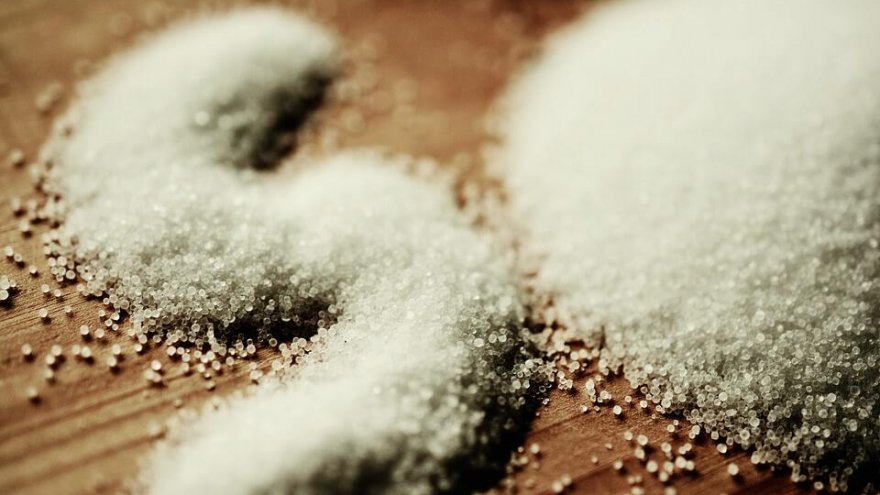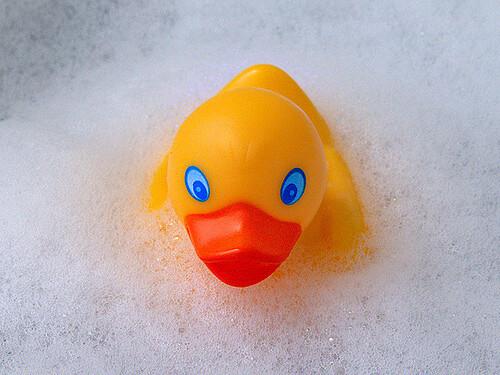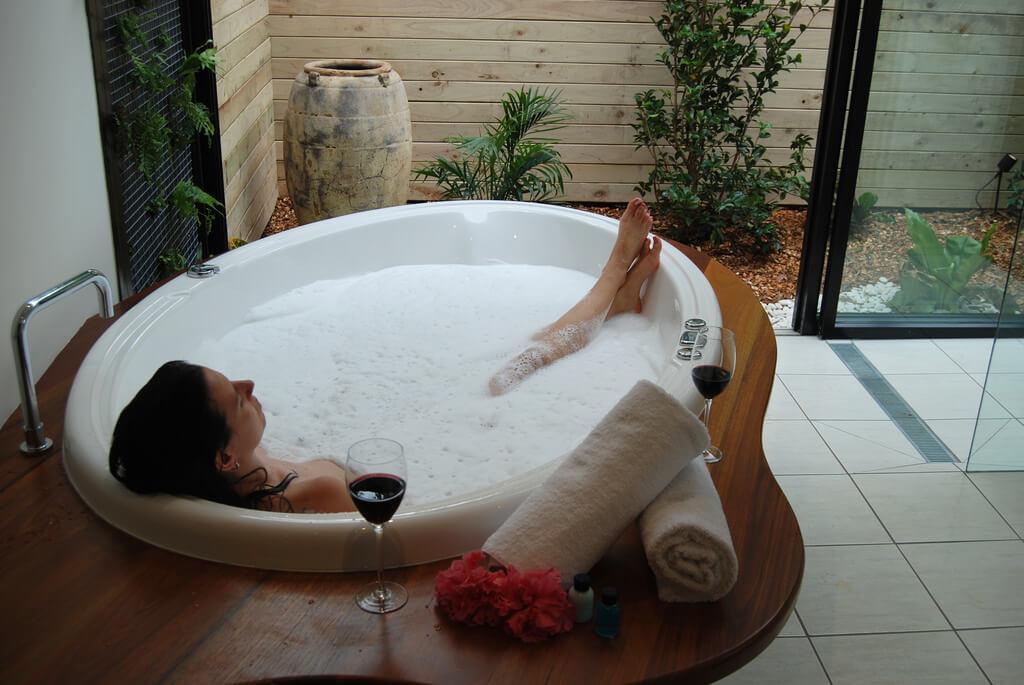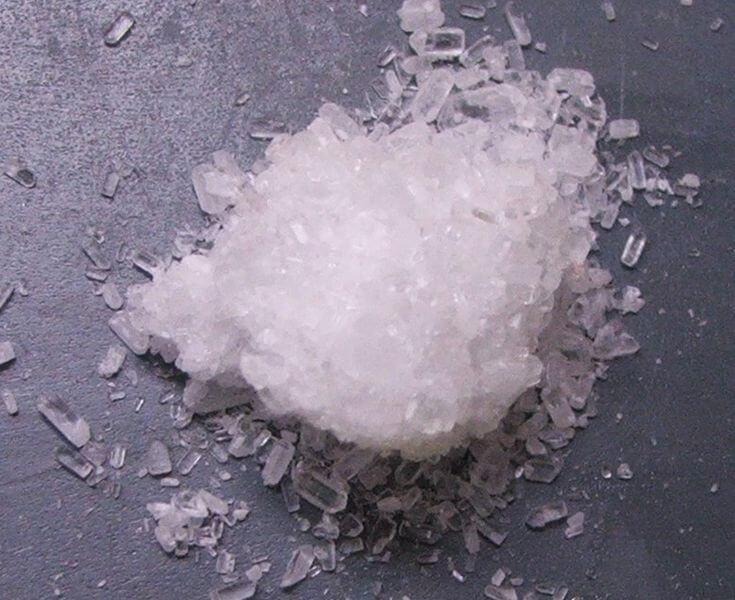Epsom Salt Baths for Runners

I sank into the tub and let out a sigh of relief. When was the last time I had a bath instead of a shower? I honestly could not remember. It seems that in our busy lives, making time for “relaxation” can be a chore when it means that we have one more thing “to do” at the end of the day before we can go to sleep. And normally for runners, that sacred “me” time is reserved for squeezing in those miles or speed workouts or cross-training.
The Epsom salts had thoroughly dissolved into the hot water and I sniffed around suspiciously. Odorless and lacking the obvious excitement of a bubble bath, I was a little bit skeptical about trying an Epsom salt bath, but my boyfriend had recommended it. Within a few minutes, my limbs felt heavy, my mind felt relaxed, and I sunk into the soothing lull of my yoga tune playlist and aromatherapy candles.
When I emerged from the bath 20 minutes later, my previously aching muscles felt heavy and relaxed, and I slept like a rock. I noticed subtle changes in my energy level and in my running training in the days that followed. Since then I make a point to take an Epsom salt bath a few times a week. Most “experts” recommend mixing 1-2 cups of Epsom salts in the tub for a 10-20-minute soak time, up to 3 times per week.

Is it a placebo effect, or can an Epsom salt bath provide a physiological boost for runners?
It’s been practiced for a long time, probably as long as ice baths became popular for athletes. Historically it’s been used as a laxative when consumed orally (be careful not to swallow your bath water!) as well as a powerful agent for muscle aches and pains.
Epsom salts break down into magnesium and sulfate which are then absorbed through the skin when dissolved into a warm bath. Magnesium plays an important role in numerous body functions, such as muscle control, electrolyte regulation, energy production, and detoxification. Magnesium also plays a role in mood because it helps the body to bind to serotonin, and deficiencies have been associated with anxiety and depression. Sulfates are also important for detoxification as well as regulating enzymes, brain health and proteins found in your joints.
It’s becoming more common that people develop a magnesium deficiency. In fact, exercise and stress deplete the body of Magnesium, so it’s possible that runners may be predisposed to developing a chronic deficiency. There are different types of magnesium that you can take orally in the pill form, but the stomach is not as efficient at absorbing Magnesium when compared to the skin.

The claimed benefits of Epsom salt baths are widespread, from reducing headaches and promoting relaxation/stress relief to improving heart and nerve function, sunburn and psoriasis. Epsom salts are used to treat muscle pain and soreness, muscle cramps, pain, swelling, tendon irritation and bruising.
As far as the evidence goes, it’s difficult to find studies that validate the use of Epsom salt baths in any type of population, let alone runners. There’s been an apparent rise since 2010 in the abuse of “bath salts” which are designer stimulant drugs in the pill form that contain a mixture of Epsom salts and other compounds, not to be confused with an actual Epsom salt bath. The pill form contains dangerous potentially life-threatening amphetamines.
Outside of studies on (negative) effects the illegal pill form, there’s not a lot of scientific research out there to back up the anecdotal claims of Epsom salt baths. Many avid and elite long-distance runners publicly divulge that they will take an Epsom salt bath before bed on the eve of a race. Some believe that the baths help to prevent muscle cramping or flares in overuse injuries.

A small study with 16 participants was conducted in 2014 at the Western Illinois University Kinesiology Department. They elicited delayed onset muscle soreness (DOMS) in the participants via eccentric loading exercises with dumb-bells. They followed 4 different treatment groups for a period of time following the exercise session (magnesium sulfate and contrast water therapy, magnesium sulfate and cryotherapy, magnesium sulfate and thermotherapy, and a control group with no treatment). They found no significant differences between groups for joint angles, perceived pain or perceived disability. The author concluded that the resolution of DOMS was time-dependent and the addition of Epsom salt baths and other thermal therapies did not change the outcome. However, all participants were untrained females and they only studied one small muscle group (elbow flexors) in one small sample size.
Another study examined the effects of Epsom salt baths and napping on a group of sixty elite athletes (both men and women) who played 9 different sports. The athletes spent 45 minutes in a “FLOAT” tank, which provided a dark and quiet environment where they were suspended in a saline Epsom salt solution in warm water. They found that a single session of FLOAT therapy resulted in improvement of 15/16 mood-state variables as well as lower perceived muscle soreness, regardless of whether the athlete fell asleep or not. Athletes who were able to nap did show small to moderate effect sizes on this variable. They theorized that the lack of sensory stimuli present in the flotation environment was able to dampen the nervous system to enhance relaxation. It’s difficult to infer whether the Epsom salts contributed to the outcomes of this study, or whether the napping and floating variables had a bigger impact on the athletes.
All I know is, I want one of those FLOAT tanks in my home! (Please do not go and attempt to fall asleep in the tub after reading this. Those tanks were designed very carefully to prevent drowning).
The take-home message with all of this is that Epsom salt baths may promote a number of physiological and psychological benefits for runners, though there is not enough scientific evidence out there. When done correctly, Epsom salt baths are safe to perform and may be beneficial in recovery as well as pre-race preparation for runners.

References
Kuhar, Kristin. The effect of magnesium sulfate in conjunction with water therapies on delayed onset muscle soreness. Western Illinois University (2014); 99 pages.
Driller MW, Argus CK. Flotation restricted environmental stimulation therapy and napping on mood state and muscle soreness in athletes: a novel recovery strategy? Performance Enhancement & Health (2016); 5: 60-65.
Latest Articles
 Is Running on a Treadmill Easier Than Running Outside?Runners have their own preferences, whether it is treadmill running, running outside on the road, or exploring trails. So...
Is Running on a Treadmill Easier Than Running Outside?Runners have their own preferences, whether it is treadmill running, running outside on the road, or exploring trails. So... Is It OK to Use Trail Running Shoes on the Road?While trail running shoes can be used on roads, especially in situations where a runner encounters mixed terrains or pref...
Is It OK to Use Trail Running Shoes on the Road?While trail running shoes can be used on roads, especially in situations where a runner encounters mixed terrains or pref... How to Fix Sore Quads After Running?Rest, ice, gentle stretching, and over-the-counter pain relievers can help soothe sore quads after running. Also, ensure ...
How to Fix Sore Quads After Running?Rest, ice, gentle stretching, and over-the-counter pain relievers can help soothe sore quads after running. Also, ensure ... 10 Fruits With The Most Electrolytes to Replace Sports DrinksThese fruits are high in electrolytes such as potassium, magnesium, and calcium, essential for hydration, muscle function...
10 Fruits With The Most Electrolytes to Replace Sports DrinksThese fruits are high in electrolytes such as potassium, magnesium, and calcium, essential for hydration, muscle function...

